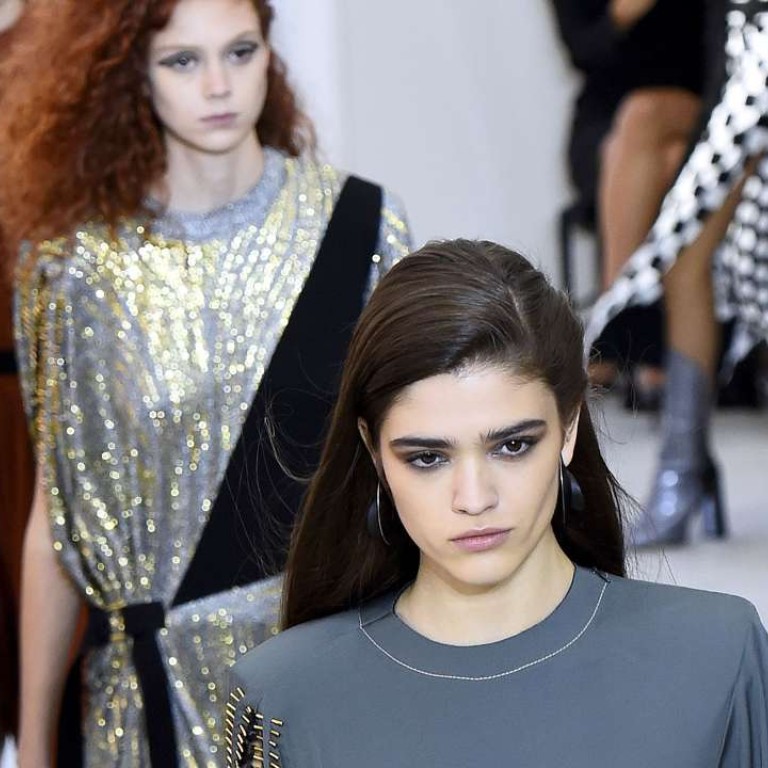
Louis Vuitton’s store revamps show we believe in Hong Kong and China, CEO says
Michael Burke explains why a slide in Hong Kong’s luxury retail sales will not affect the French brand’s long-term strategy of continued investment in China
On the final day of Paris fashion week, Nicolas Ghesquiere shook off some of his millennial-inspired tropes and took Louis Vuitton to a more grown-up place on the catwalk. He distilled modern French sophistication, but with sensual draping, tough-girl leather jackets and a revealing thigh or hip, made it more urban and covetable.
The brand has had a tough year in Europe, Hong Kong and China. Luxury sales have fallen in Hong Kong amid economic uncertainty and as customers from China increasingly buy in Japan, Seoul and Europe. While many in the luxury retail sector are worried, Michael Burke, Louis Vuitton’s fast-talking chief executive and chairman, has some words of comfort.
“Tell them the leader in the market believes in Hong Kong,” says Burke. “Look at what we are doing. We are completely revamping our Landmark store and completely rebuilding our store on Canton Road.”

The brand did the same in Brazil and Japan a few years ago – when others were downsizing or jittery about slowing economies. Last week, parent company LVMH said it had acquired German luggage maker Rimowa (popular with Asia clients) for €€640 million (HK$5.56 billion).
Burke regards the drop in luxury spending over the past two years with equanimity, and says Louis Vuitton needs to keep investing in Hong Kong as a “unique, iconic destination in the world that will remain important for Chinese shopping”.
“There was a moment two years ago in Hong Kong when the [shopping] day trippers were excessive,” says Burke. “We had what we call ‘froth’ in the market. If we have a drop in froth, there’s no problem.”

“That will continue to be a strategic market. Also for America and Japan and Korea, and we’ve always looked at all these markets that way. We look for long-term trends on the urban, social and economic fronts.”
Burke has seen the luxury sector transformed in his 30 years at LVMH, during which time he has served as CEO of Christian Dior USA, Louis Vuitton North America, Fendi and Bulgari. What has changed, he says, is “the speed and complexity of the business”. Two or three decades ago, it was mostly conducted in a few cities, but today it can be anywhere from Beijing to Johannesburg, Sao Paulo to Sydney.

He says every luxury brand should remember “that first and foremost it’s a local business” and that they need to establish a relationship of trust with local clients first. The famously devoted and extravagant Chinese Louis Vuitton buyers, who will queue for an hour outside the labels flagship store on the Champs-Elysees in Paris, exist only because of the relationship the brand has forged in China over the past 20 years, having been one of the first to break into the Chinese market.

One thing has grown out of China’s big offshore luxury spending is a lucrative grey resale market (where people buy goods at a lower price in Europe and take them into China without paying import levies), and brands such as Chanel have sought to harmonise global prices to fight this. Louis Vuitton won’t be following suit, says Burke.
“We will not be having a single worldwide price; that makes absolutely no sense for my clients. They fully expect to find lower prices in Paris, lower prices than in Chengdu. We pay duties when we ship to Chengdu.”

As China’s luxury consumers become more sophisticated, there’s increasing speculation that many are deserting big brands such as Louis Vuitton, Chanel and Prada in favour of local, independent or smaller labels.
To keep Chinese customers faithful, Burke says the label will continue major investment in the country but that stores and locations which “do not meet the new norms in China will be dropped”.
“We will lead that movement, instead of chasing as many openings as possible; we said four years ago that phase is over, and now we’re entering into a phase of quality, not quantity.
“The future, although complicated, will be bright,” says Burke.

